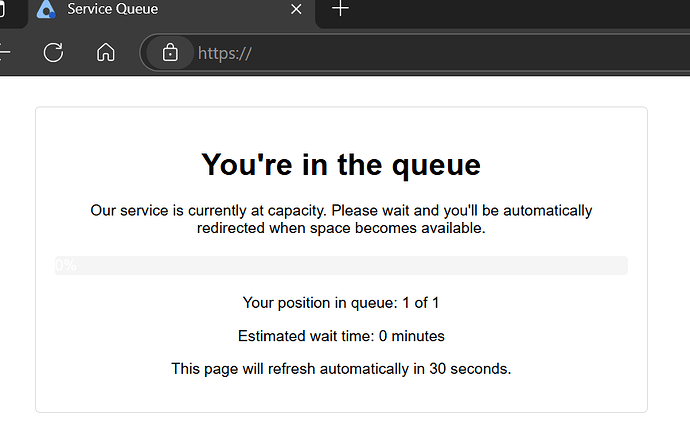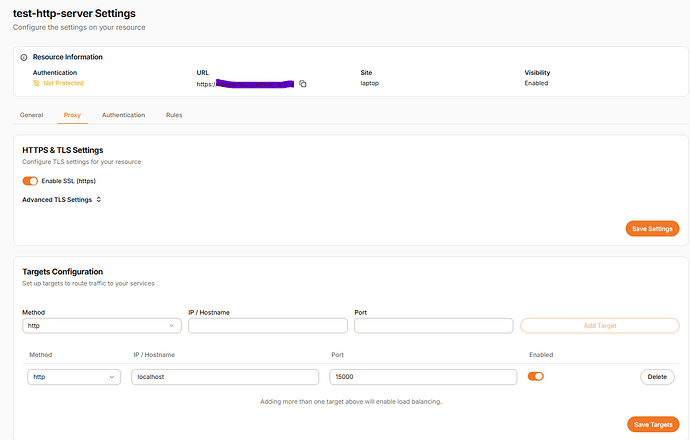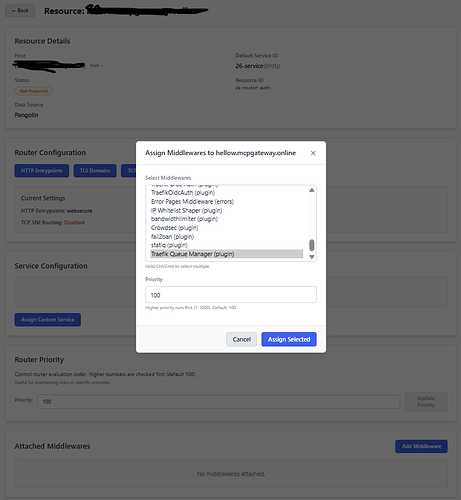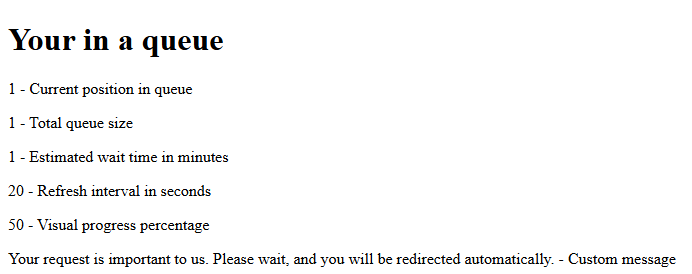 Managing Load with the Traefik Queue Manager Plugin + Pangolin
Managing Load with the Traefik Queue Manager Plugin + Pangolin
Traefik Queue Manager is a middleware plugin designed to control traffic spikes by queuing users when service capacity is exceeded. Combined with Pangolin and Middleware Manager, it’s a powerful solution for managing traffic overload.
This guide walks you through a minimal working implementation.
Prerequisite: Set up the Traefik Dashboard to debug config issues.
 Features
Features
- Custom queue page
- Configurable max users (maxEntries)
- First-come, first-served access
- Visual position and wait time tracking
- Cookie-based or IP/UserAgent session tracking
 Step-by-Step Setup
Step-by-Step Setup
Step 1: Add the Plugin via Plugin Hub
Enable the plugin by adding to traefik_config.yml:
experimental:
plugins:
traefik-queue-manager:
moduleName: "github.com/hhftechnology/traefik-queue-manager"
version: "v1.0.2"
Restart Traefik:
docker compose restart traefik
Screenshot: Traefik config with plugin block enabled:
Step 2: Prepare Your Queue Page
Create a directory for static assets:
mkdir -p ./public_html
Create public_html/queue-page.html with this content:
<!DOCTYPE html>
<html>
<body>
<h1>Your in a queue</h1>
<p>[[.Position]] - Current position in queue</p>
<p>[[.QueueSize]] - Total queue size</p>
<p>[[.EstimatedWaitTime]] - Estimated wait time in minutes</p>
<p>[[.RefreshInterval]] - Refresh interval in seconds</p>
<p>[[.ProgressPercentage]] - Visual progress percentage</p>
<p>[[.Message]] - Custom message</p>
</body>
</html>
Update your docker-compose.yml Traefik service:
volumes:
- ./public_html:/var/www/html:ro
Restart Traefik:
docker compose restart traefik
Verify with:
docker exec -it traefik sh
ls /var/www/html
Step 3: Add Middleware Template
Append to middleware-manager/templates.yml:
- id: "traefik-queue-manager"
name: "Traefik Queue Manager"
type: "plugin"
config:
traefik-queue-manager:
cookieName: queue-manager-id-random-number-here
enabled: true
maxEntries: 500
queuePageFile: /var/www/html/queue-page.html
sessionTime: 5m
useCookies: "true"
Screenshot Queue Manager middleware visible in UI
Restart Middleware Manager:
docker compose restart middleware-manager
Step 4: Create a Protected Resource
If you don’t have one, create a temporary resource:
Add to docker-compose.yml:
python-http:
image: python:3.11-slim
container_name: python-http
working_dir: /app
command: python -m http.server 15000
ports:
- "15000:15000"
restart: unless-stopped
In Pangolin:
- Create resource
mywebsite.yourdomain.com - Target service:
python-httpon port 15000 - Attach the
Traefik Queue Managermiddleware in Middleware Manager
Screenshot Resource setup screen in Pangolin
Screenshot add middleware in Middleware Manager
Step 5: Test It Out
Visit:
https://mywebsite.yourdomain.com
You should be allowed through because usage is below the threshold.
Now edit the middleware to simulate a queue:
"maxEntries": 1
Visit again in a second tab or incognito. You should see the queue page.
Screenshot Queue HTML page rendered with position and wait time
 Wrap-Up
Wrap-Up
You now have a working example of the Traefik Queue Manager in action with:
- HTML queue pages
- Session management
- Load control
Want more? View advanced config options here: Plugin Page
 Thanks for Following Along!
Thanks for Following Along!
You just implemented fair, graceful queuing with Traefik, Pangolin, and Middleware Manager. Perfect for launch days, flash sales, and peak usage moments.
Happy queueing! ![]()




